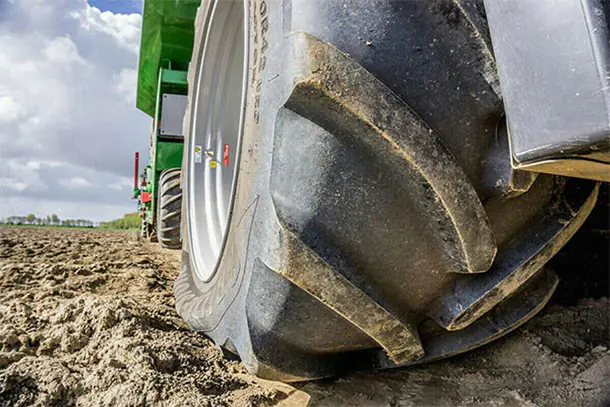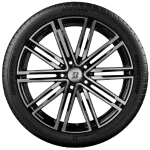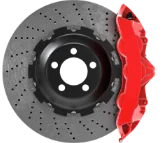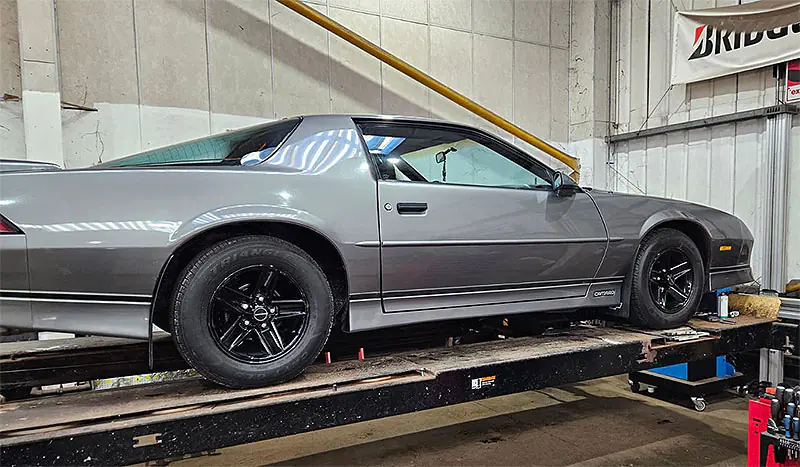The Importance of Correct Inflation Pressure for any Tractor Tyre
Article written by Bush Tyres

Unlike a car, a tractor is a multi-purpose vehicle designed to carry or pull much more than its own weight, over all types of terrain. These demands are made possible by the tyres fitted to the tractor, and the disparity between these demands is the reason why it is essential to always have the tyres inflated to the correct pressure.
Adjusting the tyre pressure will allow you to carry a heavier load at slow speeds or travel at high speeds with little or no load on your tractor. Carrying out regular tyre pressure checks and adjustments is crucial to optimize the performance of your tractor, preserve your tyre’s constituent components, ensure expected tyre longevity and to protect the health of your soil.
There is a direct link between the load on a tyre, travelling speed, type of work and inflation pressure, and there are three key factors on which the correct operation of your tractor tyres depend:
- Load
- Speed
- Inflation pressure
It is easy to understand tyre pressure adjustments; increasing the tyre pressure allows the tyre to carry a heavier load but increases soil compaction. Lowering the tyre pressure reduces soil compaction but limits the load the tyre will carry.
The reason that the tyre inflation pressure affects the load carrying capacity of a tyre is because when under load, in the area where the tyre is in contact with the ground (the contact patch), the tyre undergoes major deformation. The load on the tyre crushes the tyre. This deformation is known as deflection.
When travelling along, during the rotation of the tyre, the deformed area progressively regains its initial shape. At slow speed, after one rotation the tyre recovers to its initial shape. The greater the load on the tyre, the greater the extent of the deflection, so if you increase the speed with a heavy load, before it comes into contact with the ground again during the next rotation the deformed tyre does not have time to return to its initial shape. As well as excessive heating of the tyre’s components, this results in the deformation getting bigger with each rotation of the tyre and can result in a failure in the tyre casing. This is why tyre inflation pressure charts always show the inflation pressure that corresponds to a given load for a precise speed. If your speed is higher than indicated in the chart, the inflation pressure for this same load will be insufficient.
When a tyre is completely flat, it cannot bear any load at all. It is the volume of air within the tyre, i.e. the pressure, which allows it to bear the weight of the tractor and your implements.
The more you increase inflation pressure, the more you increase the tyre’s capacity to withstand the load. The limit to this load capacity is indicated on the sidewall of your tyre in the form of a number associated with a letter (the number corresponds to a load index and the letter corresponds to a speed index, in relation to a nominal inflation pressure).
Tyre manufacturers test their tyres for use with a maximum load at a given speed and a precise inflation pressure. These are optimal conditions of use for the tyre which allow you to work safely while safeguarding your tyre’s longevity. While respecting the minimum pressure recommended by the manufacturer and your driving speed, to avoid soil compaction, if carrying lighter load, you can reduce the tyre pressure significantly.
On occasions you can carry a higher load than the load index, within a certain limit and on condition that you compensate using the two other settings: Inflation pressure must be increased and speed must be reduced proportionally.
Good tyre management lies in respecting the manufacturer’s recommendations. When it comes to replacing your tractor tyres, to be certain to never accidentally go beyond the recommended limit take into account of the weight of your usual implements, and choose a tyre with a suitable load capacity. It is necessary to know the front and rear axle weight of your tractor with the implement attached. With mounted implements, you also need to consider the weight transfer. Ideally weigh the tractor on a weigh bridge or weigh cells.
To find out the required load index of your future tyres, you can refer to the standard load index table below with its correspondence in kilos (KG):
To preserve the constituent components and longevity of your tyres, it is recommended to not exceed the speed index when loaded. While it is advisable to reduce tyre pressure to avoid soil compaction in your fields, an underinflated tyre on the road will suffer casing damage and possible failure. With high speed and when loaded, the tyre deforms and the internal structure heats up leading to rapid tread wear. Also, as underinflated sidewalls suffer from excessive deflection you will experience reduced stability when cornering and when braking, plus increased fuel consumption due to the extra-large contact patch with the ground and greater rolling resistance. It is therefore preferable to increase the tyre pressure on the road while remaining within the limits indicated in the markings on the sidewall for which you will find the equivalent in km/h in the table below:
| Speed Index |
Speed Km/h |
Speed Index |
Speed Km/h |
| A1 | 5 | A8 | 40 |
| A2 | 10 | B | 50 |
| A3 | 15 | C | 60 |
| A4 | 20 | D | 65 |
| A5 | 25 | E | 70 |
| A6 | 30 | F | 80 |
| A7 | 35 | G | 90 |
You can exceed the speed index in certain conditions. As far as respecting speed is concerned, the relation to load is inevitable; if you drive with no load, on condition that you comply with applicable regulations and safety rules, exceeding the speed index will have no consequences on the structure of the tyres.
ETRTO (European Tyre and Rim Technical Organisation) has recommended adjusting tyre pressure and load based on driving speed. At high speed, an inflation pressure higher than the load correspondence is recommended (while staying within the maximum limits recommended by the manufacturer).
Consider appropriate inflation pressure in advance if you have long distances to travel by road:
- To increase speed by more than 10 km/h = increase pressure by 0.20 bar
As well as reducing your load:
- To increase speed by more than 10 km/h = reduce the load by 5%
If it is not possible to adjust the inflation pressure in your tractor tyres when you go from field to road, in many cases the best solution is to use VF technology tyres. VF tyres (Very High Flexion) provide great operating flexibility. They are manufactured with very high-tech components, have a very flexible sidewall and a more resistant structure, so you no longer need to adjust pressure settings between field and road.
When checking and adjusting agricultural tyre pressures, always refer to the tyre manufactures pressure tables found in the tyre technical manual, website or mobile phone app. Alternatively, get in touch with your local Bush Tyres branch or representative.



 Tyres
Tyres Services
Services Fast Fit
Fast Fit Offers
Offers



